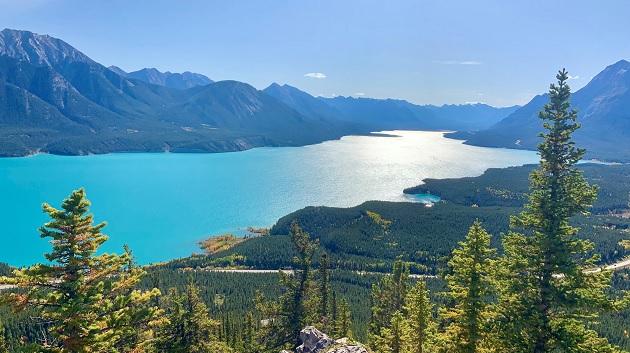In Alberta, These Watershed Protectors’ Passion Runs Deep
North Saskatchewan Watershed Alliance’s new Youth Water Council is dedicated to conservation, restoration, education and watershed health

From its starting point in the Columbia Icefield, the glacial waters of the North Saskatchewan River travel 1,300 kilometers through mountain and valley, town and country.
On its easterly journey from Alberta to Manitoba, where it eventually empties into Lake Winnipeg, the river spans a drainage area of 122,800 square kilometers.
As the water rolls on, various activities on the landscape add pressure to the river and its watershed. This human footprint increases as the river travels from the headwaters to the east, with the combined impacts of forestry, agriculture, energy and urban development reducing water quality, and adding excess nutrients and contaminants.
When it flows through agricultural land, runoff from fertilizers enters the streams. When new developments are constructed, drainage areas are damaged. Habitat is lost. Wildlife numbers dwindle. Blue-green algae blooms damage lakes.
Youth in the North Saskatchewan River’s watershed are paying attention to these issues, says Jillian Peterson, a watershed planning technician with the North Saskatchewan Watershed Alliance (NSWA), based in Edmonton.
“They are passionate about learning about the watershed—the importance of preserving it and conserving not only the water, but also the land, for future generations,” she explains.
NSWA provides leadership in watershed management and planning. The non-profit is well known in the region for its collaborative work with organizations and stakeholders committed to solving watershed challenges. The interest of local youth in having a voice in discussions about watershed conservation prompted NSWA to launch a new initiative in 2024—a Youth Water Council.
With the support of a $20,000 Fueling Futures grant from Enbridge, NSWA established the first youth council, designed to give members educational opportunities about conservation as well as a platform to protect the watershed.
Every year on April 22, the world marks Earth Day, an annual celebration of environmental protection around the globe. At Enbridge, sustainability is central to everything we do, and we also support community sustainability projects that help improve, grow and nurture our environment.
Education is a key component of the youth council. The nine students selected for the inaugural group were recruited from an open call for 15-to-17-year-olds in the region. Peterson says they chose youth with “a passion for the environmental issues watersheds face.”
The council meets in person for a one-weekend retreat and online for a series of virtual learning sessions led by NSWA team members and guest speakers, such as scientists, hydrologists and conservationists. They cover watershed management, stewardship, conservation, restoration, wetland health, water quality and climate change impacts.
Through the guest speakers, the teens are introduced to career pathways. Already, two council members have chosen to enroll in environmental studies programs when they begin post-secondary studies in the fall, Peterson notes.
As part of the council, the members will produce a signature project they can proudly share with the community. They’ve chosen a comic book containing information about watershed issues and what people can do about them.
The product will include information and artwork focused on responsible recreation, riparian health, and watershed stewardship. The comic book will be available online, and distributed in print through local bookstores and at NSWA events.
“It's really exciting to see how quickly they've absorbed the information they’ve learned,” Peterson says.
“To (the youth), success is educating people on why it's important to preserve our watersheds,” she adds. “They want to help people become responsible citizens—for the sake of our water’s future.”

